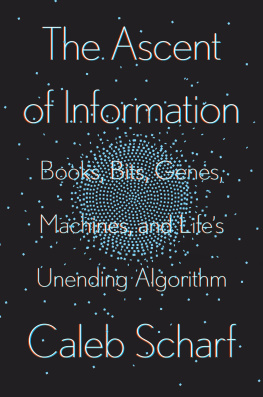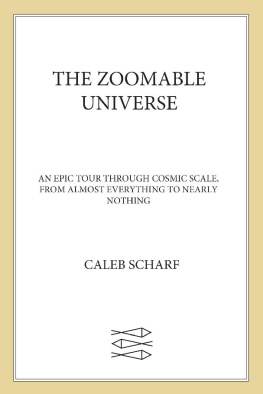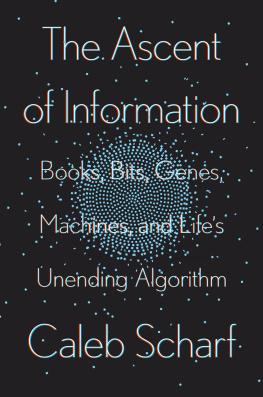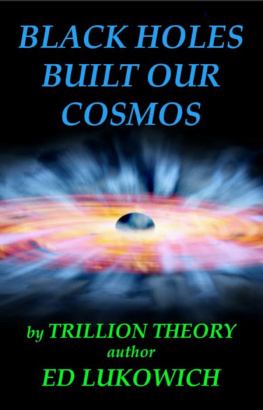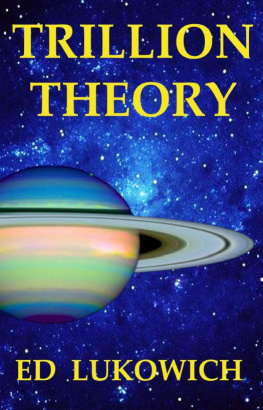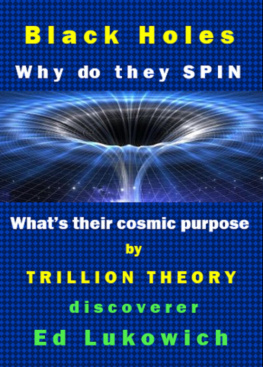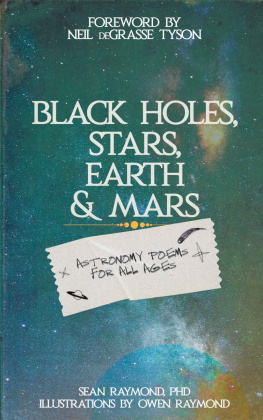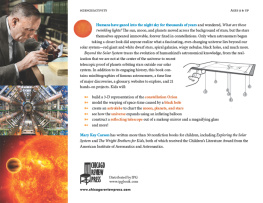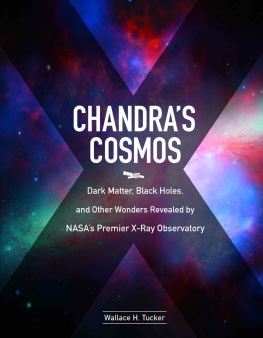Caleb Scharf - Gravity’s Engines - How Bubble-Blowing Black Holes Rule Galaxies, Stars, and Life in the Cosmos
Here you can read online Caleb Scharf - Gravity’s Engines - How Bubble-Blowing Black Holes Rule Galaxies, Stars, and Life in the Cosmos full text of the book (entire story) in english for free. Download pdf and epub, get meaning, cover and reviews about this ebook. year: 2012, publisher: Scientific American / Farrar, Straus and Giroux, genre: Science. Description of the work, (preface) as well as reviews are available. Best literature library LitArk.com created for fans of good reading and offers a wide selection of genres:
Romance novel
Science fiction
Adventure
Detective
Science
History
Home and family
Prose
Art
Politics
Computer
Non-fiction
Religion
Business
Children
Humor
Choose a favorite category and find really read worthwhile books. Enjoy immersion in the world of imagination, feel the emotions of the characters or learn something new for yourself, make an fascinating discovery.

- Book:Gravity’s Engines - How Bubble-Blowing Black Holes Rule Galaxies, Stars, and Life in the Cosmos
- Author:
- Publisher:Scientific American / Farrar, Straus and Giroux
- Genre:
- Year:2012
- Rating:5 / 5
- Favourites:Add to favourites
- Your mark:
- 100
- 1
- 2
- 3
- 4
- 5
Gravity’s Engines - How Bubble-Blowing Black Holes Rule Galaxies, Stars, and Life in the Cosmos: summary, description and annotation
We offer to read an annotation, description, summary or preface (depends on what the author of the book "Gravity’s Engines - How Bubble-Blowing Black Holes Rule Galaxies, Stars, and Life in the Cosmos" wrote himself). If you haven't found the necessary information about the book — write in the comments, we will try to find it.
Caleb Scharf: author's other books
Who wrote Gravity’s Engines - How Bubble-Blowing Black Holes Rule Galaxies, Stars, and Life in the Cosmos? Find out the surname, the name of the author of the book and a list of all author's works by series.
Gravity’s Engines - How Bubble-Blowing Black Holes Rule Galaxies, Stars, and Life in the Cosmos — read online for free the complete book (whole text) full work
Below is the text of the book, divided by pages. System saving the place of the last page read, allows you to conveniently read the book "Gravity’s Engines - How Bubble-Blowing Black Holes Rule Galaxies, Stars, and Life in the Cosmos" online for free, without having to search again every time where you left off. Put a bookmark, and you can go to the page where you finished reading at any time.
Font size:
Interval:
Bookmark:
A Note About the Author
Caleb Scharf is the director of the Columbia Astrobiology Center. He writes the Life, Unbounded blog for Scientific American ; has written for New Scientist , Science , and Nature , among other publications; and has served as a consultant for the Discovery Channel, the Science Channel, The New York Times , and more. Scharf has given keynote speeches at the American Museum of Natural History and the Rubin Museum of Art, and is the author of Extrasolar Planets and Astrobiology , winner of the 2011 Chambliss Astronomical Writing Award from the American Astronomical Society. He lives in New York City with his wife and two daughters.
DARK STAR
A computer sits among the coffee-stained papers scattered across my desk. Its screen has been blank all morning. Suddenly it lights up and displays a pixelated image. A message is coming in from space.
A few days earlier, high above Earths surface, a great orbiting observatory has stared for forty hours over the bows of the Milky Way galaxy. With chilled eyes it has patiently tracked a tiny patch of the cosmos, a speck of sky close to the constellation Aurigathe Charioteer. In this direction is a glorious view for a spotter peering into the abyss in the hope of finding treasure.
This remarkable instrument is called Chandra. Decades of work went into its construction, with hundreds of people toiling in multiple countries. The blood, sweat, love, and tears of a highly technological civilization produced the smooth surfaces and exquisitely precise devices inside it. Careers started and ended while it grew from a dream into a reality. Finally it was lofted into space and released with tender delicacy from the belly of NASAs space shuttle Columbia , becoming a tangible example of humanitys endless curiosity.
Now it has captured a whiff of something from the deep. Photons, particles of light, have found their way down through its mirrors and filters, forming an image on the silicon sensor of a digital camera. That image, encoded as a stream of data, has passed to Earth, first beamed as microwaves to a ground station and then relayed around the globe. Processed and sent on across a continent, another journey through hundreds of miles of wires and fiber optics, it finally re-forms as a monochrome picture on a screen in my small and untidy office ten floors above the streets of twenty-first-century Manhattan.
On any given day, we dont expect to see much that is particularly remarkable in the vast flood of incoming data that is a part of modern science. Patience is a hard-won lesson. Yet there, amid the rough noise of the image, is a structure. Its small and faint, but unmistakable. I can see a pinpoint of light surrounded by something elsea fuzzy streak jutting out to the left and right. It looks like a small dragonfly pinned to a piece of cardboard. Something is very curious about this image. It has the flavor of a new species.
Traffic out on the street echoes noisily up the canyon of buildings, but for an instant it rings hollow. My mind is not in this world anymore, but away in a very, very distant corner of the universe.
Twelve billion years ago, the photons that made this image began their journey. They are X-rays, invisible to human eyes, but able to penetrate through our soft bodies. For 12 billion years they have passed unimpeded through the cosmos. But as they have traveled, the universe has changed; space itself has expanded, stretching the photon waveforms and cooling them to a lower energy.
When they set out there is no star called the Sun, no planet called Earth. It isnt until they are two-thirds of the way through their journey that part of a collapsing nebula, a cloud of interstellar gas and dust in a still impossibly remote galaxy, produces a new star and a set of new planets that will eventually become our home.
When Earth forms, these photons are already ancient, 7-billion-year-old particles that have traversed vast stretches of the cosmos. Time passes. Somewhere on Earth a complex set of molecular structures begins to self-replicate: life begins. Two billion years later, the photons start to enter the very outer regions of what we might call the known universe. Here are the great superclusters and web-like structures of galaxies that we have mapped. Spanning tens of millions to hundreds of millions of light-years, these forms are the skeletons upon which galaxies and stars are coalescing, molded by gravitymillions of galaxies, and quintillions of stars, strung through the cosmos. On Earth, microbial evolution has just given rise to the first cells of a new type of lifethe Eukarya, our direct ancestors. These busy microscopic creatures swim off in search of food.
A billion more years go by. The photons enter truly known space, a realm where our instruments have mapped great walls of galaxies and huge empty voids. Here are structures with familiar names and calling cards, like Abell 2218 and Zwicky 3146, huge gravitational swarms of galaxies known as clusters. On Earth the very first true multicellular life emerges, and the air is filling with oxygen. The chemistry of this element is ferocious. New types of metabolism are evolving in responsea revolution is under way. Just 500 million years later, the dry surfaces of Earth are covered by something exotic: plants that use the molecular tools of photosynthesis. A strange, greenish tint appears across the supercontinent Gondwana, the largest body of land on the planet.
The photons continue their patient journey, passing through regions that will be increasingly familiar to as yet unevolved astronomers. Nearby are the great galaxy clusters we will name for the constellations in which we see them: Coma, Centaurus, and Hydra. Onward the photons fly, and from the point of view of an observer standing to the side as they race past, our galaxy is now one of thousands of patches of light in the sky ahead.
It takes them another 490 million years to reach our Local Group, a ragtag band of galaxies. Some are large like Andromeda and the Milky Way, and some are small, like the dwarf galaxies Cetus, Pegasus, Fornax, and Phoenix. It is not a particularly remarkable place, perhaps a total of a few trillion or so stars altogether.
On Earth many great periods of life have come and gone. The dinosaurs have not been seen for almost 60 million years. The continents and oceans have changed dramatically, and the contours of our modern world are clearly visible. Birds and mammals are swarming across the globe. The Black, Caspian, and Aral Seas are beginning their separation from the ancient Tethys Ocean and what will become the Mediterranean Sea.
In the next few million years, the photons descend into the gravity well of our galactic neighborhood. The Milky Way is now a distinct glowing smear reaching across the sky as it gets ever closer. On the third planet from a modest G-dwarf star orbiting in one of the outer arms of this spiral galaxy, a new type of animal begins to walk upright on two legs. As it leaves its footprints in muddy volcanic ash in what is now the Olduvai Gorge in eastern Africa, the photons speed ever closer. Now in almost their 12 billionth year, they have never slowed down. As particles of light they are threaded into space and time, moving at the same constant speed as they did at their origin.
It takes them another 2 million years to reach the outermost wisps of our great Catherine wheel of a galaxy. A major glacial age is taking place on Earth. Huge ice fields grow outward from the planetary poles, engulfing the northern hemisphere. This profound change in environment impacts the behavior and fortunes of the hominids descendantshumans. Groups of people migrate and explore. Areas that were once shallow seas are now traversable on foot. Another twelve thousand years pass and the photons fly in across the spiral arm of stars, gas, and dust in the Milky Way galaxy that is called Perseus. By now the ice has retreated, and new pockets of humanity are scattered far and wide. Great cultures have risen and vanished, and others are beginning to flourish across the planet from the Middle East to Asia, from Africa to North and South America, and in Oceania.
Next pageFont size:
Interval:
Bookmark:
Similar books «Gravity’s Engines - How Bubble-Blowing Black Holes Rule Galaxies, Stars, and Life in the Cosmos»
Look at similar books to Gravity’s Engines - How Bubble-Blowing Black Holes Rule Galaxies, Stars, and Life in the Cosmos. We have selected literature similar in name and meaning in the hope of providing readers with more options to find new, interesting, not yet read works.
Discussion, reviews of the book Gravity’s Engines - How Bubble-Blowing Black Holes Rule Galaxies, Stars, and Life in the Cosmos and just readers' own opinions. Leave your comments, write what you think about the work, its meaning or the main characters. Specify what exactly you liked and what you didn't like, and why you think so.

